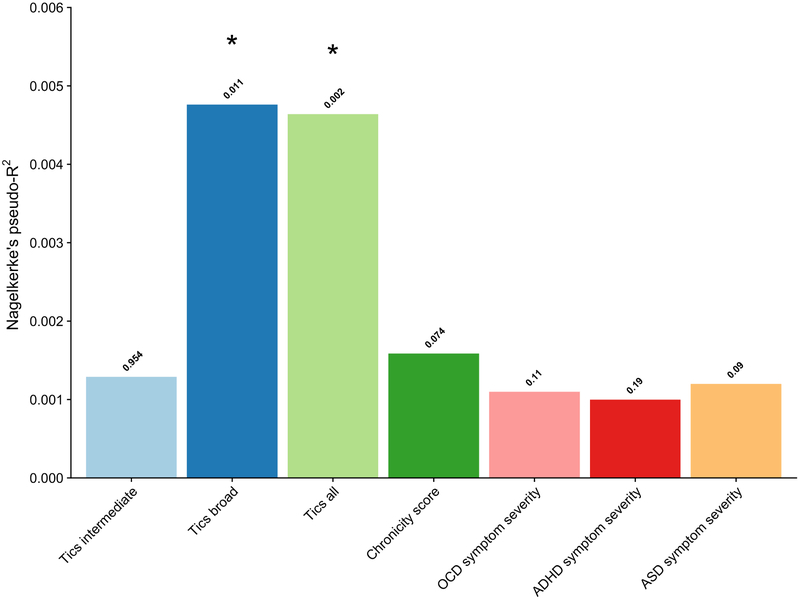Figure 1:
Explained variance by the polygenic risk score for each tested phenotype in the Avon Longitudinal Study of Parents and Children (ALSPAC) target sample (7, 8), based on the second Tourette Syndrome genome-wide association study (TS GWAS 2, Yu et al., in prep) as discovery sample. The presence of tics was defined by three different categorizations: “Tics intermediate” (approximating ‘TS/chronic tic disorder (CT) intermediate’ by Scharf et al. (16)), which included individuals that experienced motor and/or vocal tics at least once a week at age 13 years and experienced at least one tic symptom between the ages of 1.5 and 10 years; “Tics broad”, (approximating ‘TS/CT broad’ by Scharf et al. (12)), which included individuals that have experienced motor and/or vocal tics occurring at least once a week at age 13; and “Tics all”, which included individuals that reported at least one positive answer to the tic screening question between the ages 1.5 and 13. The chronicity score is the sum of the number of times tics were present up to age 10.7 plus the number of different tic symptoms at 13.8 years (11,12). The risk scores were calculated at different P-value thresholds (P < 0.0001 with increments of 0.00005 to P < 1) and the model that explained the most variance is reported.
* Significance after correction for multiple testing of the different P-value thresholds and for the number of phenotypes tested using the false discovery rate (Q < 0.05).

